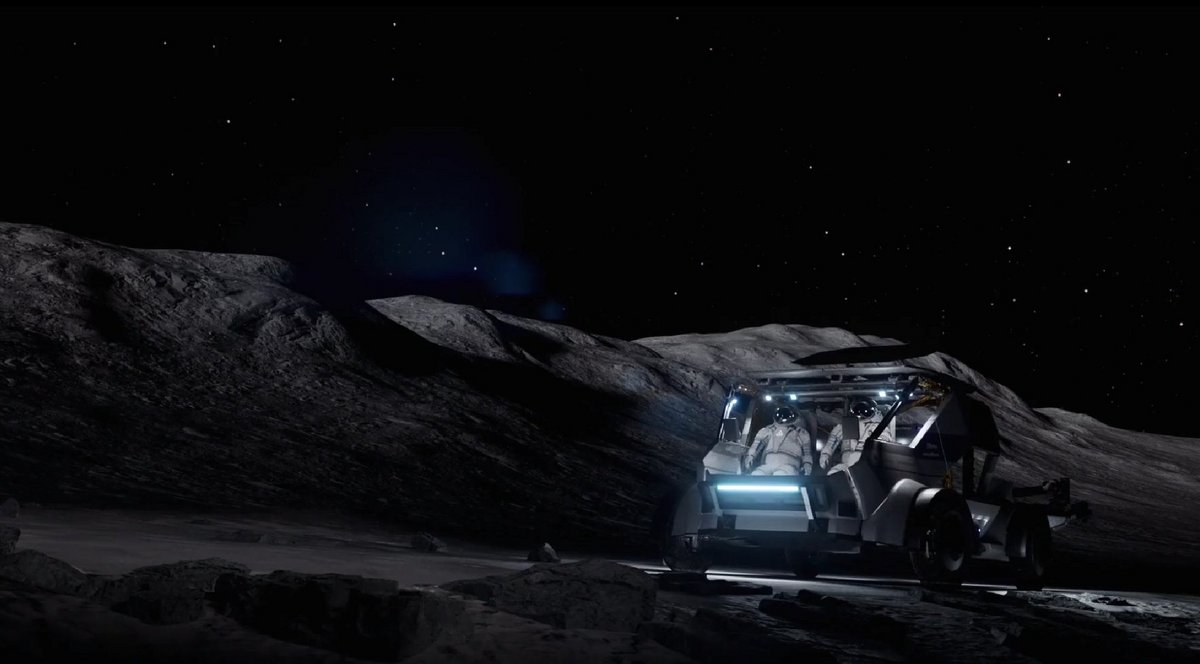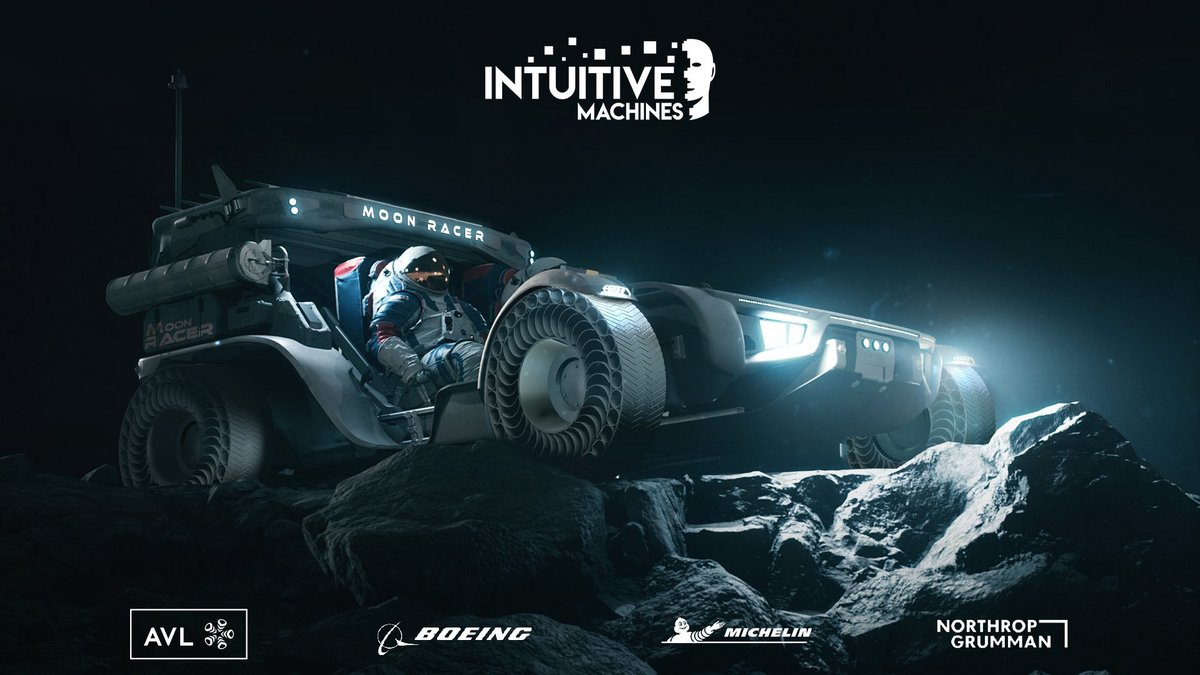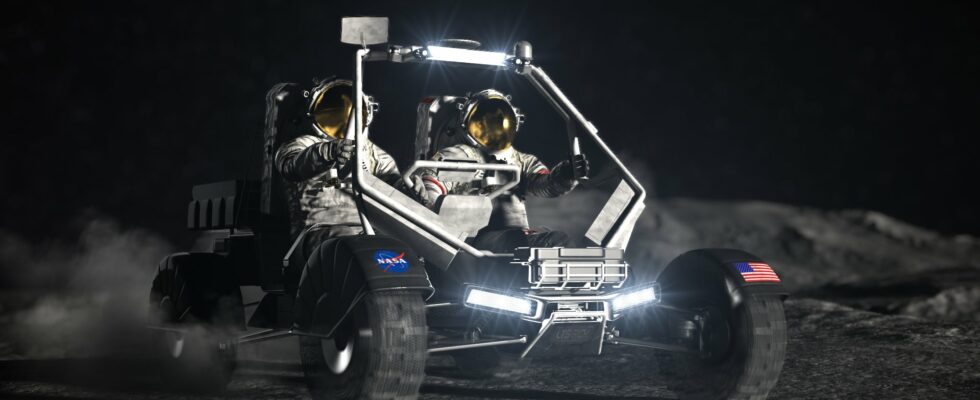The American agency continues to prepare for its future lunar operations and has pre-selected Intuitive Machines, Lunar Outpost, and Venturi Astrolab to design the astronaut vehicle. But this is only a step, companies have one year to convince NASA. The result is a check for several billion dollars…
Gone are the days of the Lunar Jeep, make way for the LTV (Lunar Terrain Vehicle)! So that astronauts can explore a little further than their landing site, NASA is organizing with its famous public-private contracts to provide them with a do-it-all vehicle. But be careful, the latter, which will not have a pressurized cabin, will have to be much more advanced than those which rolled between Apollo 15 and 17 on the lunar surface.
First, it will be much more durable, because it can be used by several missions one after the other, which means having to recharge its batteries and survive the lunar night and its very low temperatures. Furthermore, the LTV will also have its own means of communication and can be piloted remotely, from Earth or the Gateway orbital station. Practical, because astronauts will not be residing on the Moon for long periods for a long time.
Transport of experiments, equipment with a robotic arm, autonomous driving, these will be real space vehicles which will go to the South Pole of the Moon. But who will take care of it? NASA, after a long study of files, selected three companies to go further and move on to design.
The selection is not over!
The three winners of this selection phase are therefore Intuitive Machines (which succeeded in February in landing its IM-1 lunar lander on the surface) with Boeing, Michelin, Northrop Grumman and AVL, Lunar Outpost with Lockheed Martin , MDA and GoodYear, and Venturi Astrolab. The latter, which is an association between two entities of Venturi (Monaco and Switzerland) and Astrolab (United States), had already presented its FLEX vehicle to the public in 2023.
But be careful, this does not mean that NASA will end up with three different LTVs. It’s more like the final of the competition! In the phase which will end in about a year, these companies will receive a sum (Intuitive Machines mentions 30 million dollars) to develop their concept, present a detailed schedule, plans, materials, subcontractors , in short, have the strongest possible file. Because yes, the American agency will only select one.

A juicy contract at stake, but be careful…
However, there will be no shortage of motivation: the winners will sign a public-private development contract worth up to $4.6 billion. This will not include “Lunar Jeeps” for missions after 2029, but development, a demonstrator and a vehicle for the Artemis V mission.


This is once again a public-private contract, that is to say that NASA will pay (expensively) for a private development and service, it is up to the selected company to calculate carefully, and above all to respect the costs or to pay from its own funds any additional expenses. This then allows it to offer other public or private entities the use of these materials.
These contracts are also double-edged. We see the extraordinary success of SpaceX’s Crew Dragon capsule, often cited as an example, but the fixed sums also cost Boeing more than $1.5 billion, and pushed other players to go out of business. ..
Source : NASA


9